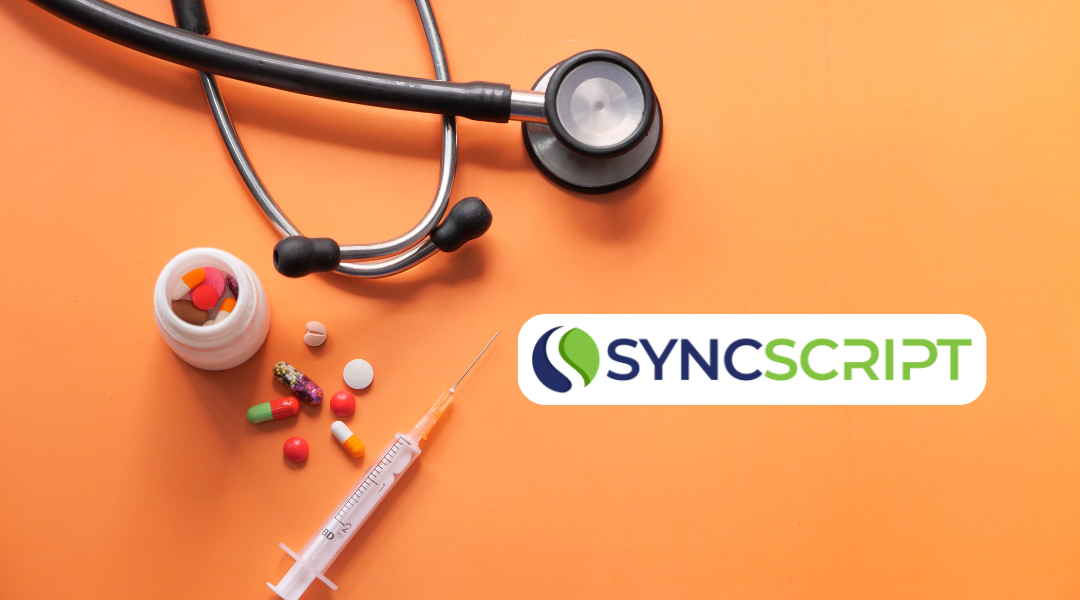At SyncScript, we like to say no two transcripts are ever alike—and that’s especially true in the world of medical transcription. One day, we’re listening to a researcher describe a new medical device in technical detail; the next, we’re transcribing a patient’s experience with a complex pharmaceutical treatment. The topics vary, but one thing stays the same: accuracy is non-negotiable.
Whether it’s interviews with healthcare professionals, focus groups about emerging therapies, or in-depth pharma discussions, we’re here to share a behind-the-scenes look at how we handle transcription in the ever-evolving medical space—especially when it comes to complex terminology and drug names.
The Trickiest Part? Drug Names. Here’s How We Handle Them.
Pharmaceutical terminology can feel like its own language—ever tried to spell “canagliflozin” on the first try? Neither have most people. But in transcription, spelling errors aren’t just typos—they can cause confusion, miscommunication, and lost time.
Our Go-To Tips for Nailing Drug Names:
1. Context Is Key.
We always start by listening closely to context. Is the speaker talking about a diabetes medication? Oncology treatment? We use contextual clues to narrow down the possibilities and guide our research.
2. Use Trusted Databases.
We rely on trusted medical resources like:
- The FDA’s drug database
- Drugs.com and Medscape
- Company websites for branded products. We never “guess”—everything is verified against reliable sources.
3. Phonetic Clues Help, But Don’t Fool Us.
Some drug names sound similar—especially when spoken quickly. Our team is trained to recognize common phonetic pitfalls and double-check soundalike names to ensure we’re capturing exactly what’s said, correctly.
4. Spellcheck Isn’t Enough.
We run a manual review of all complex terms because autocorrect loves to “fix” things that don’t need fixing. Think: turning “adalimumab” into “adam limb.” We’ve seen it all.
Beyond Drugs: Accuracy Across Medical Topics
Of course, it’s not just about medications. We handle a wide range of medical content that requires:
- Familiarity with medical devices (and all their moving parts)
- Understanding clinical trial terminology
- Accurately transcribing patient stories with sensitivity and precision
- Capturing healthcare provider insights without losing nuance or detail
Here’s What Helps Us Get It Right:
- Clear audio = better transcripts. We encourage clients to record in quiet spaces, use quality mics, and avoid talking over one another whenever possible.
- Client glossaries are gold. If clients provide brand names, device specs, or preferred terms, we incorporate them seamlessly. The discussion guide is always helpful!
- Team experience counts. Our transcriptionists have seen it all—this isn’t their first time typing “electroencephalography” (or the hundredth).
Why All This Matters
Accurate transcripts aren’t just about spelling things right—they’re about preserving meaning and supporting real-world outcomes in healthcare and research. A small transcription error can lead to big misunderstandings, especially in fields where precision is everything.
We take that responsibility seriously. And while it might seem like “just words on a page,” we know those words help fuel research, innovation, and patient care.
All in a day’s transcription? Absolutely. But behind every transcript is a thoughtful, meticulous process—designed to make sure every word counts.
How SyncScript Can Help
Whether you’re preparing research reports, analyzing patient interviews, or documenting innovation in healthcare, accurate transcripts aren’t just nice to have—they’re essential. We’re here to make sure you get them without the headache.
So go ahead—focus on the interviews, the insights, and the innovations. We’ll handle the transcripts.
Our medical transcription work spans it all:
🗣 In-depth interviews with healthcare professionals
💊 Pharma discussions full of tongue-twisting drug names
👩⚕️ Conversations with patients sharing real-life experiences
🧬 Technical deep-dives into new treatment options, therapies, and devices
Want to see what our process looks like for your next project? Let’s connect.
Contact Us

